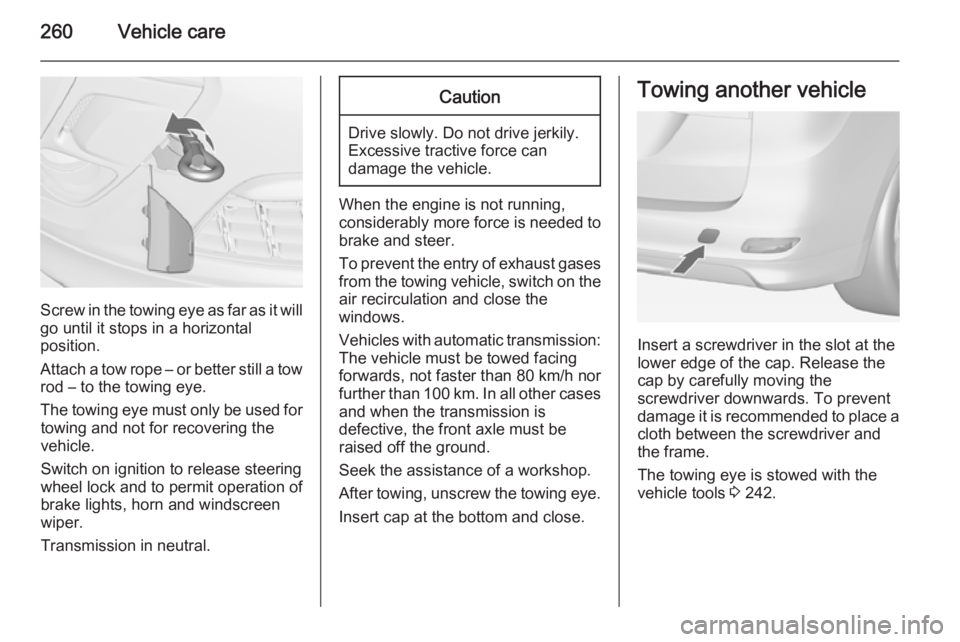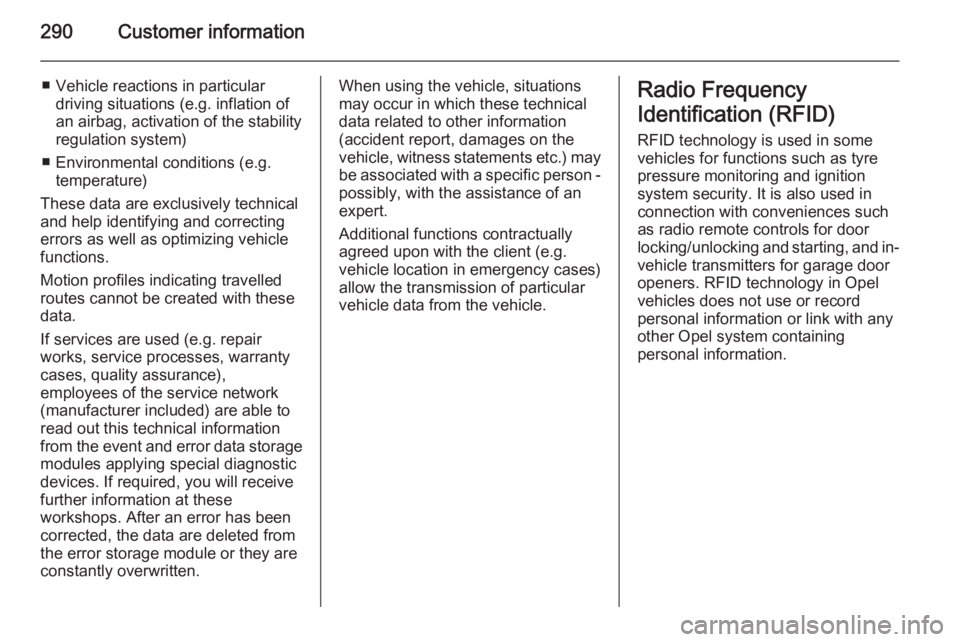Page 249 of 299

Vehicle care247
confirms that the sensoridentification code has been
matched to this tyre and wheel
position.
9. Proceed to the right side front tyre,
and repeat the procedure in
Step 8.
10. Proceed to the right side rear tyre,
and repeat the procedure in
Step 8.
11. Proceed to the left side rear tyre, and repeat the procedure inStep 8. The horn sounds twice to
indicate the sensor identification
code has been matched to the left
side rear tyre, and the TPMS
sensor matching process is no
longer active.
12. Turn off the ignition.
13. Set all four tyres to the recommended air pressure level
as indicated on the tyre pressure
label.
14. Ensure the tyre loading status is set according selected pressure
3 115.Temperature dependency
Tyre pressure depends on the
temperature of the tyre. During
driving, tyre temperature and
pressure increase.
The tyre pressure value displayed in
the DIC shows the actual tyre
pressure. Therefore it is important to
check tyre pressure with cold tyres.
Tread depth
Check tread depth at regular
intervals.
Tyres should be replaced for safety
reasons at a tread depth of 2-3 mm
(4 mm for winter tyres).
For safety reasons, it is
recommended that the tread depth of
the tyres on one axle should not vary
by more than 2 mm.
The legally permissible minimum
tread depth (1.6 mm) has been
reached when the tread has worn
down as far as one of the tread wear
indicators (TWI). Their position is
indicated by markings on the
sidewall.
If there is more wear at the front than the rear, swap round front wheels and
rear wheels periodically. Ensure that
the direction of rotation of the wheels
remains the same.
Tyres age, even if they are not used.
We recommend tyre replacement
every 6 years.
Page 262 of 299

260Vehicle care
Screw in the towing eye as far as it will
go until it stops in a horizontal
position.
Attach a tow rope – or better still a tow
rod – to the towing eye.
The towing eye must only be used for towing and not for recovering the
vehicle.
Switch on ignition to release steering
wheel lock and to permit operation of
brake lights, horn and windscreen
wiper.
Transmission in neutral.
Caution
Drive slowly. Do not drive jerkily.
Excessive tractive force can
damage the vehicle.
When the engine is not running,
considerably more force is needed to
brake and steer.
To prevent the entry of exhaust gases from the towing vehicle, switch on the
air recirculation and close the
windows.
Vehicles with automatic transmission: The vehicle must be towed facing
forwards, not faster than 80 km/h nor further than 100 km. In all other cases
and when the transmission is
defective, the front axle must be
raised off the ground.
Seek the assistance of a workshop.
After towing, unscrew the towing eye.
Insert cap at the bottom and close.
Towing another vehicle
Insert a screwdriver in the slot at the
lower edge of the cap. Release the
cap by carefully moving the
screwdriver downwards. To prevent
damage it is recommended to place a cloth between the screwdriver and
the frame.
The towing eye is stowed with the vehicle tools 3 242.
Page 292 of 299

290Customer information
■ Vehicle reactions in particulardriving situations (e.g. inflation of
an airbag, activation of the stability
regulation system)
■ Environmental conditions (e.g. temperature)
These data are exclusively technical
and help identifying and correcting
errors as well as optimizing vehicle
functions.
Motion profiles indicating travelled
routes cannot be created with these
data.
If services are used (e.g. repair
works, service processes, warranty
cases, quality assurance),
employees of the service network
(manufacturer included) are able to
read out this technical information
from the event and error data storage
modules applying special diagnostic
devices. If required, you will receive
further information at these
workshops. After an error has been
corrected, the data are deleted from
the error storage module or they are
constantly overwritten.When using the vehicle, situations
may occur in which these technical
data related to other information
(accident report, damages on the
vehicle, witness statements etc.) may be associated with a specific person -
possibly, with the assistance of an
expert.
Additional functions contractually
agreed upon with the client (e.g.
vehicle location in emergency cases)
allow the transmission of particular vehicle data from the vehicle.Radio Frequency
Identification (RFID) RFID technology is used in somevehicles for functions such as tyre
pressure monitoring and ignition
system security. It is also used in
connection with conveniences such
as radio remote controls for door
locking/unlocking and starting, and in-
vehicle transmitters for garage door
openers. RFID technology in Opel
vehicles does not use or record
personal information or link with any
other Opel system containing
personal information.
Page 296 of 299

294
GGauges ....................................... 102
General information ...................213
Glass panel .................................. 34
Glovebox ..................................... 63
Graphic-Info-Display, Colour- Info-Display ............................ 119
H Halogen headlights ....................227
Hand brake ......................... 168, 169
Hazard warning flashers ............140
Headlight flash ........................... 135
Headlight range adjustment ......135
Headlights................................... 133
Headlights when driving abroad 136
Head restraint adjustment .............8
Head restraints ............................ 36
Heated mirrors ............................. 30
Heated rear window ..................... 33
Heated steering wheel .................95
Heating ........................................ 43
Heating and ventilation system . 145
High beam ......................... 113, 134
High beam assist ................114, 134
Hill start assist ........................... 171
Horn ....................................... 14, 95I
Identification plate .....................268
Ignition switch positions .............155
Immobiliser .......................... 28, 113
Indicators .................................... 102
Information displays.................... 115
Instrument cluster ......................102
Instrument panel fuse box .........239
Instrument panel illumination .....235
Instrument panel illumination control .................................... 142
Instrument panel overview ........... 10
Instrument panel storage ..............63
Interactive driving system ...........172
Interior care ............................... 263
Interior lighting ............................ 142
Interior lights ...................... 142, 235
Interior mirrors .............................. 30
Interruption of power supply ......166
Introduction .................................... 3
ISOFIX child restraint systems ....62
J Jump starting ............................. 258
K Keys ............................................. 20
Keys, locks ................................... 20L
Lane departure warning .....111, 202
Lashing eyes ............................... 86
Lighting features .........................143
Light switch ................................ 133
Load compartment ................25, 76
Load compartment cover .............79
Load compartment fuse box ......240
Loading information .....................92
Load rails and hooks ...................86
Low fuel ..................................... 113
Low washer fluid ........................114
M Malfunction indicator light ..........109
Manual anti-dazzle ......................30
Manual mode ............................. 165
Manual transmission .................. 167
Manual windows ..........................31
Memorised settings ......................22
Mirror adjustment ........................... 9
Misted light covers .....................141
N New vehicle running-in ..............155
Number plate light .....................234
O
Object detection systems ...........190
Odometer ................................... 102